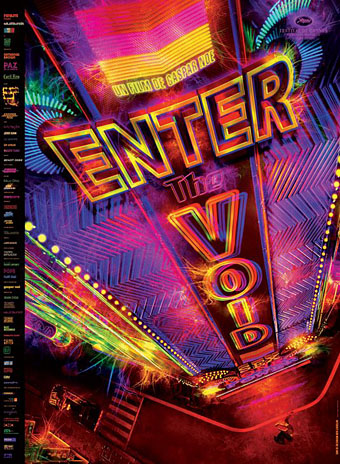
It’s taken me a while to see this but the long search for a genuinely psychedelic feature film is over. That’s genuinely psychedelic not in the debased sense of a handful of garish or trippy visuals, but in the full-spectrum expanded-consciousness sense for which Humphrey Osmond invented the term in 1956:
I have tried to find an appropriate name for the agents [psilocybin, mescaline, LSD, etc] under discussion: a name that will include the concepts of enriching the mind and enlarging the vision. My choice, because it is clear, euphonious, and uncontaminated by other associations, is psychedelic, mind-manifesting.
Other films have given us flashes of this kind of unfiltered experience—Chas’s mushroom trip in Performance (1970), for example—or attempted to relay LSD states through Hollywood conventions: The Trip (1967) and Altered States (1980). Then there are inadvertently psychedelic moments such as the Star Gate sequence in 2001: A Space Odyssey (1968). Some of the most successful works from a psychedelic perspective have almost always been abstract, micro-budget films such as those made by James Whitney, Jordan Belson, Ira Cohen and others. But until very recently no-one had attempted to combine the narrative-free intensity of abstract cinema with a film narrative that would warrant placing psychedelic experience at the heart of the story. I was hoping A Scanner Darkly (2006) might do it but, good as it was, it didn’t really get there. Gaspar Noé’s Enter the Void is the film that gets everything right.
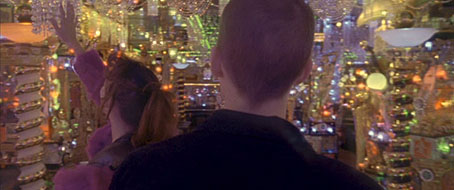
Linda and Oscar.
The narrative is a simple one (Noé calls his story a “psychedelic melodrama”): Oscar, a young American drug-dealer living in Tokyo smokes DMT, trips out for a while then goes to exchange some goods with a customer in a small club called The Void. While there he’s shot and killed in a police raid. His disembodied consciousness leaves his body, and for the next two hours wanders the streets and buildings following his beloved sister, Linda, and his friends while they cope with the aftermath. Later on he starts to re-experience memorable (and traumatic) moments from his life. The Big Signifying Text in all of this is introduced in the opening scene: The Tibetan Book of the Dead. Oscar hasn’t read much of it so his friend Alex quickly relates (for the benefit of the audience) the book’s description of what happens to the soul between the time of death and rebirth into a fresh human body. A few minutes later we’re with Oscar experiencing this very process in dizzying, miraculously-filmed detail. Flicking through my own copy of The Tibetan Book of the Dead (OUP, 1960) one paragraph in the introduction had particular relevance:
The deceased human being becomes the sole spectator of a marvellous panorama of hallucinatory visions; each seed of thought in his consciousness-content karmically revives; and he, like a wonder-struck child watching moving pictures cast upon a screen, looks on, unaware, unless previously an adept in yoga, of the non-reality of what he sees dawn and set.
WY Evans-Wentz
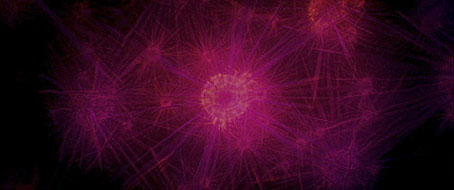
This is your brain on drugs: the DMT trip.
What’s immediately remarkable about Enter the Void is that the entire film is viewed from Oscar’s point of consciousness: we’re inside his head from the opening shot on, stray thoughts, eye-blinks and all. We only see his face when he looks in the mirror. This has been done before, notably in Lady in the Lake (1947), to which Noé refers as an inspiration, and in parts of Strange Days (1995). But this is the first time the subjective viewpoint has featured drug disorientation and life after death. I have a slight fetish for these kinds of cinematic restrictions, having always enjoyed Hitchcock’s Rope (a sequence of fifteen-minute takes) and Rear Window (everything seen from a single room) for their technical virtuosity. I enjoyed Cloverfield more than I might have otherwise for its unbroken video-camera point-of-view. Enter the Void goes further than all of these by placing us inside the consciousness of someone capable of freely moving through any architectural space at will, as well as jumping back and forth in time. Disembodied Oscar can also enter the heads of those he’s observing, at one point entering the head of his sister’s boyfriend while the pair are having sex. The practicalities required to make all of this perfectly seamless staggers the mind. The director alludes in the DVD booklet to the difficulties posed by the shoot.
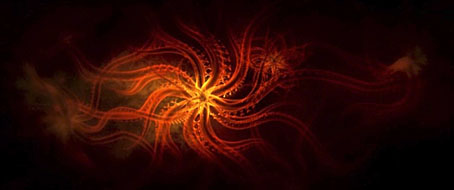
Part of the beauty of the film is that it’s just as difficult to convey the experience of watching it as it is to convey the intensity of a drug experience. The only way to find out is to go there yourself, to enter the void. The many resonances of the title keep flashing at me: Noé refers to “the shimmering vacuity of human experience”, so the void may refer not only to afterlife limbo but also to the heads of the people disembodied Oscar enters, as well as to their aimless lives. The content may be psychedelic but the director is a hard-edged realist, and despite the background presence of Tibetan Buddhism this is posthumous experience with any spiritual metaphoria stripped away: the void again. With the exception of Paz de la Huerta who plays Oscar’s sister, Linda, all the principals are non-actors which, together with the camera technique, gives the film a documentary quality. Ken Loach would be the customary reference but Noé’s direction owes a lot more to the great Alan Clarke (Penda’s Fen, Scum, Made in Britain, Road, Elephant (1989), The Firm, etc) whose work Noé says he admires. Clarke’s later TV films evolved a style of long, gliding takes using a Steadicam; it’s no exaggeration to describe Enter the Void as being like Alan Clarke on acid.
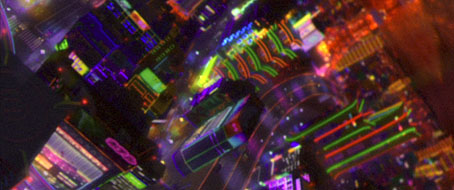
So here’s the thing: this is one of the most ambitious and audacious films I’ve seen in a long, long time yet I’ve seen little or no discussion of it beyond the expected reviews. (Maybe people have been talking about it and I’ve missed it.) TV screening will be a problem in some places on account of some unfaked sexual activity at the end but I’m still surprised that the usual suspects I rely on to alert me to such things haven’t caught it. Let this post serve as just such an alert. Peter Greenaway has been moaning for years about so much cinema being little more than filmed theatre. This is true in many cases but with a couple of exceptions Greenaway’s solution has been to film an endless parade of semi-static tableaux whose aesthetics are often derived from the absolute stasis of oil painting. Enter the Void isn’t an oil painting and it isn’t a filmed play: it’s 21st-century cinema.
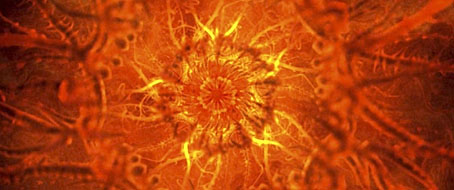
You want more? How about a soundtrack of stunning Wire-friendly eclecticism with pieces by Alvin Lucier, Annea Lockwood’s glass music, Thomas Bloch on the Cristal Baschet (!), Bach arranged by Delia Derbyshire, Jean-Claude Eloy, Cristian Vogel, Hamburger Lady by Throbbing Gristle and ANS-One by Coil. Oh, and there’s a killer title sequence. Did I say I enjoyed this film? Anyone with more than a passing interest in psychedelic culture needs to acquire the DVD immediately. I watched the director’s cut, but there’s also a shorter version present and some of the effects sequences as extras. Long or short, Enter the Void is a trip in all senses of the word.
Previously on { feuilleton }
• Chris Parks
• Penda’s Fen by David Rudkin
• Matrix III by John Whitney
• Cristalophonics: searching for the Cocteau sound
• John Whitney’s Catalog
• Arabesque by John Whitney
• Jordan Belson on DVD
• Ten films by Oskar Fischinger
• Lapis by James Whitney
• Expanded Cinema by Gene Youngblood

Man, I saw this on the big screen and my jaw hit the ground instantly and didn’t come up for air for a long time. It was a heroic pushing of cinematic language in bold new directions, and an amazing thing to experience in a movie theater – the whole climatic sequence soaring over the city and then hovering over the rooms of the brothel was just hypnotic, scary, beautiful stuff.
Hi Tristan. Yes, I can imagine how impressive this would be on a big screen. The ideal venue would be an Imax theatre so you’re fully inside Oscar’s head but I can’t imagine many of those theatres being willing to screen it.
I saw this film with a friend at the cinema and was absolutely enthralled. We both felt we’d experienced something revelatory that could be talked of in the same breath as Tarkovsky in terms of poetic/visual/intellectual reach. Although I felt strongly that it needed a large cinema screen, reading your description causes me to consider purchasing the DVD – I recall the moving, transporting experience of watching Jarman’s Blue at home many years ago. Still, it’s another reason to lament the loss of repertory cinemas.
I’d love to see Enter The Void’s soundtrack released separately. I went on to watch Noe’s Irreversible which I found to be, perhaps inevitably, a lesser though still impressive work. The earlier film’s soundtrack, Thomas Bangalter’s only solo release I believe, is well worth hearing.
You refer to a director’s cut, I think that’s the version we saw at the cinema – I remember it seeming very long, but wishing it would be even longer, savouring every moment.
Thanks for reminding me of this film.
Downloading immediately!
I remember it being quite hard to see when it came out – I think it only had a very limited and short release. I snatched a chance to see it at a one-off late show having read some intriguing things about it but not really knowing what to expect, and had my tiny mind blown! It is crazy that it wasn’t more widely seen – I don’t anyone else whose seen it, apart from the person I saw it with. But on the other hand it is kind of nice, and increasingly unusual, when these things are secret…
Snoid: That’s what I suspected. I haven’t even seen the DVD very much in shops here so I kept forgetting to look for it. But it’s this kind of neglect that turns films into cult items years down the line.
I saw it on dvd and it didn’t alter the experience much. It was a lot of fun. For those who haven’t seen it, I Stand Alone (Seul contre tous) by Gaspar Noé is also very good… and very disturbing.
I am of the other camp – I wish Noe had confined himself to a “handful of garish or trippy visuals”. Noe’s stylistic mastery and originality is beyond doubt, but the film is otherwise so unsubtle and simplistic that it makes Hanna Montana look like Hannah Arendt. And Noe’s handling of the Tibetan Book of the Dead (that one again!) is shallow, although you could rationalize that by saying that it is at an appropriate level for the protagonists’ mind.
I was impressed by the sound design; in a theatre, the abundant sub-bass gives the film a good share of its visceral, hypnotic power; but couldn’t he just give us three hours of the DMT trip?
michelangelo: The thing is, if you want three hours of trippy visuals today you don’t need someone to find millions of euros and a team of effects people to do it. There are plenty of programs that do the job, even things online you can watch in your browser.
Regarding the banalities, I think the title is again a crucial pointer: we’re not being asked to enter the rich tapestry of human life (or death). Noé acknowledges the meagreness of the storyline by labelling it a melodrama. I’d also point again to Alan Clarke: the TV film he made about drugs in the 1980s, Christine, concerned a suburban schoolgirl junkie who does nothing more for 40 minutes than walk from one house to another with a bag of gear, shoot up with a friend or two then watch television. On the one hand it’s completely boring and undramatic; on the other its how life is for some people.
This is arguable but I suspect that anything with a more elaborate storyline might not have found the finance, hence the recourse to a small group of characters. The director says he had trouble enough finding the money as it was. The other point is that a radical form isn’t necessarily helped by a complex narrative. James Joyce’s Ulysses is little more than “ordinary man wanders round Dublin all day, makes a new friend then goes home”. The interest isn’t in the simple storyline but in the form its telling takes. On the other side of the equation, a film as complex as Synecdoche, New York wouldn’t necessarily be improved by a more radical style, such a style might well render it incomprehensible.
Wikipedia also mentions a detb to De Palma’s Snake Eyes.
http://en.wikipedia.org/wiki/Snake_Eyes_(film)
SN was not a great story but some great visuals using crane shots like in EtV.
Shame it wasn’t more commercially succesful as I wonder what he would have done to try and top this. On the other hand it’ll probably become a cult film like The Holy Mountain in the not too distant future.
The reviewer for the Guardian gave it a 5 star rating http://www.guardian.co.uk/film/2010/sep/23/enter-the-void-review
while someone else thought it was virtually unwatchable
http://www.reuters.com/article/2009/05/25/us-film-void-idUSTRE54O18120090525
Nothing like completely differing opinions to get you to want to watch a new film and form your own opinion about it.
:-)
Full soundtrack at http://forums.ffshrine.org/f92/enter-void-unofficial-soundtrack-85523/
Got this lined up and ready to go. Now extra psyched!
I’m sure you’ve caught it, but the trip sequence in Jan Kounen’s Blueberry definitely deserves a mention here. I’ve not watched the whole film, I’ve been assured it doesn’t amount to much. The ayahuasca-inspired scene is great, though.
John, I agree with your perceptive response; I was only explaining why I did not enjoy the film. The “filmed theatre” – to use Greenaway’s expression – still looms large and it is not very good. I felt like I was trapped in a room with a precocious 15-year old telling me that “life sucks” and “people are mean”.
You are also correct in saying that “if you want three hours of trippy visuals […t}here are plenty of programs that do the job”. (Any leads welcome, by the way). What I meant to say in my lazily phrased comment is that I would kill for three hours of visual effects as entertaining as the DMT scene. By the way, was I alone in seeing the influence of Haeckel in those images (aside from an obvious familiarity with the real thing)?
I felt the director’s attitude was useful in keeping the trippiness away from the New Age swamps into which so much psych or cosmic stuff ends up floundering. Douglas Trumbull’s Brainstorm is a good example of how easily the cosmic end of things winds up trotting out the usual religiose imagery. On that level I felt that Noé’s approach was refreshing.
I also thought of Haeckel during the DMT trip although Haeckel has colonised my imagination so much that’s not so surprising. That said, some of Haeckel’s radiolaria pictures are very similar to the kind of buzzing lattices that manifest in psychotropic states. I felt they could have gone further with that side of things.
As to the web equivalents: this Eyecandy thing is pretty good. Less variable is Mandala of the day. And there’s a couple of things now for the Chrome browser but I don’t have that installed so I’ve not tried any of them yet.
Great Review John.
This film is widely unknown due to poor distribution. I managed to see it on the big screen in london upon it’s release. To the best of my knowledge it has never resurfaced on the art house circuit.
I also saw irreversible in the same circumstances and in light of the Devils reissue, I feel that censorship is no longer an issue because films are allowed to fail via small limited screenings. idiocracy being a case in point regarding the US market.
Noe is an auteur whose reputation has been tainted by Irreversible, hence little or no distribution. Spanish language filmakers like Alex De Igleisias and Augustin Villaronga have even less hope of mass exposure.
De igleisias’ The Last Circus is worth your viewing time and Noe was interviewed/featured on VBS.TV the media wing of Vice magazine when Void was released.
Once again, i would like to thank you for the high standards of your blog and your weekend links alone, have become my brainfood pitstop.
All the best, to you and yours.
Thanks, Scott, I suspected as much with the distribution. Most surprising to me is that I buy Sight & Sound every month and don’t recall them giving this any featured attention the way they had with previous Noé films. At least it’s out there on DVD. I found my copy in Fopp racked with all the Hollywood stuff (not in the World ghetto) so I’m hoping it’ll accrue a cult reputation as time goes on. The case of The Devils (and the re-discovery of Deep End) shows you can’t keep things down forever.
And thanks for the De la Iglesia tip, will watch out for that. Glad you like the weekend links. Those things write themselves, it’s posts like this that require the effort.
John – do you know what the differences are between the 154 min UK DVD and the 160 min ‘Full Length Directors Cut’ on Blu-Ray US import, both available on Amazon, other than the superior image and sound quality of the Blu-Ray?
Hi Matt. I’ve been thinking of getting a BR copy myself so I’d also like to know the answer to that. I suspect (and this is only a guess) the different running time will be the result of frame rates: DVD video runs at 25 fps while Blu-ray transfers are often 24 fps. If picture quality is a concern then I’d suggest ordering the French BR over the US one since PAL has the edge over NTSC, provided the French version is PAL, of course.
The best way to resolve these issues would be to search for the film on some of the Blu-ray review sites, they often compare different releases, show screen shots, etc.
John, I saw the trailer in the cinema, and the impression I got was dreary misanthropy in garish neon. You make it sound a lot more interesting. Noe should get you to do the publicity for his next flick.
Too often, trailers kick all the individuality out of a film, as if that individuality were just so much unwanted shit. There’s a science to it, I’m assured.
John – thanks for the tip. You were absolutely right – I bought the French Blu-Ray from Amazon. It’s 24fps 1080p with two versions of the film and English 5.1 DTS audio, although the English soundtrack version has burnt in French subtitles they are off the bottom of the frame. It also has many extras including isolated special effects sequences, just with music, all in HD of course, which are very Norman McLaren as well as trailers and interviews.
@matthew brandi: this is so true it made me laugh.
Matt: Thanks for the info. A shame about the burnt-in subtitles, especially since Noé says he made the film with English characters so it didn’t have to be subtitled for an English audience.
Here’s a new mix I’ve done inspired by Gaspard Noe & Enter The Void – Proper acid house sleaze fest!
Enjoy.
http://soundcloud.com/josh-caffe/enter-the-void-mix